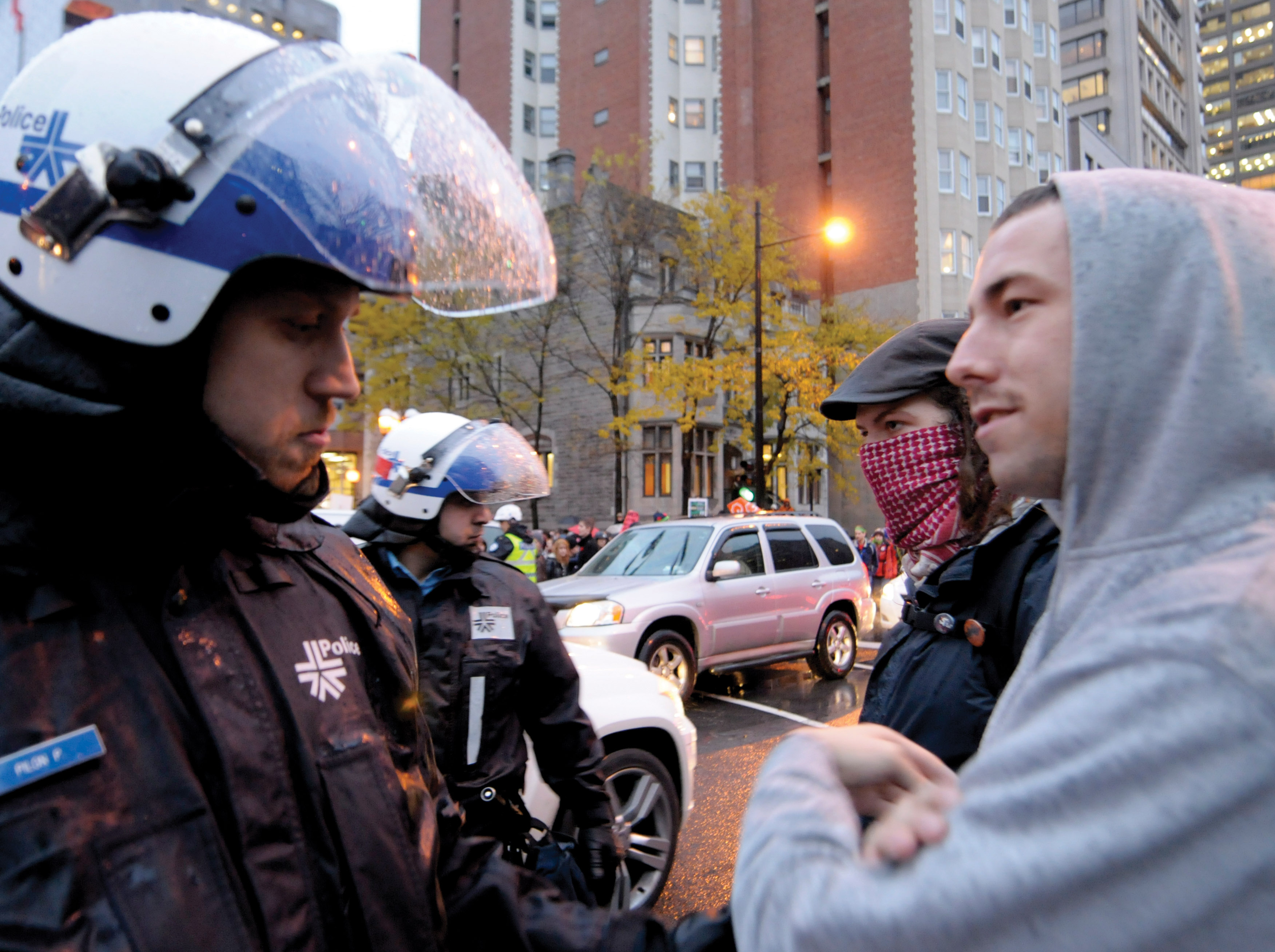Disorganized, lacking in leadership and neglectful: this is how former councillors and one employee who have worked with Morgan Pudwell are characterizing her after the former CSU executive resigned from her position as VP sustainability and promotions.
Both her detractors and supporters have come out swinging since she emailed her three-page resignation letter shortly after midnight Friday March 4. In it, Pudwell levelled a number of accusations against the CSU.
At council on Wednesday, March 9, both Pudwell and the executive she left restated letters shared earlier in the week. Members of the executive laughed quietly, seemingly in cynical disbelief while Pudwell read, and the former VP sighed while president Heather Lucas read their comments.
After an intense stand-off of supporters ended that meeting early, Pudwell circulated another statement she didn’t have the chance to read aloud because of the ensuing brouhaha.
Shortly before the meeting began, however, Arts and Science councillor Teresa Seminara circulated a letter signed by 16 out of 27 CSU councillors. In it, Pudwell is singled out for having failed as chair of the women’s caucus, a committee started last year at council that is allotted $500 to plan pro-women’s activities. As council took place the day after the 100th anniversary of the international women’s day, it was clear that there were few if any activities to commemorate the annual event.
“Over the past academic year, Pudwell has demonstrated a lack of leadership and accountability as our student representative, especially with regards to her role as chair of the women’s caucus,” the letter reads.
Pudwell, however, said that the blame does not fall squarely to her shoulders. She and Lucas, she said, were co-chairs. But in an email forwarded by Pudwell to the Concordian, Lucas informed Pudwell on Feb. 28, before her resignation, that she was not a co-chair to begin with, but only there to help. Pudwell believes the accusations that she bungled Women’s week and that the event was cancelled because of her resignation, are attempts to “discredit” her character. She claims that she sent out two emails to caucus members, but that a meeting never materialized due to lack of response, and that Seminara herself failed to inform her of any ideas she had for the week’s events.
Pudwell also suggested that women’s week could have gone forward regardless, since she had prepared promotional material for the event.
Alexandra Baptista, a graduating JMSB councillor not seeking re-election for any position, sat on the women’s caucus committee with several other councillors. She did not sign Seminara’s letter, but is not sure where to assign the blame. “I think there was a lack of organizing there, at the chair level. [Women’s week] was just brought to our attention twice,” she said, referring to the emails sent out by Pudwell. “I think more could have been done in that respect, for sure.”
She was also under the impression that Lucas and Pudwell were co-chairs.
Beyond the women’s caucus, one former CSU employee alleges that Pudwell was never prepared with promotional material for other campaigns, which falls under her portfolio. Daniel Shakibaian, a JMSB student on leave from the CSU as a campaigns manager, who is seeking both a council and senate seat on the Action slate (which is running two executives that Shakibaian worked with during his tenure, Hassan Abdullahi and Ramy Khoriaty) said that campaigns were hurt because Pudwell did not have posters and materials prepared when required. Shakibaian worked with the new executive from the start of their term in June 2010, to January 2011. He said working with Pudwell was “a little frustrating, to be honest.”
When reached on Monday night about Shakibaian’s comments, Pudwell countered that she was not given enough notice to request graphics from CSU designers. “At the end of the day, they’re artists, and they need to be given a reasonable amount of time, and to expect all types of flyers and posters in an hour after just giving them the information that the event was even happening is unreasonable.”
Pudwell highlighted the fall Peace week campaign as a rushed project, while Shakibaian said the $1 campaign, his first, faltered because of promotional material. Because Pudwell failed to delegate tasks, he could not get promotional material for two weeks, and he had to launch a campaign without flyers and posters.
But communications, Pudwell said, are behind the snafus.“The executives didn’t talk to me very often, especially [Adrien Severyns and Shakibaian] when they were planning events, gave us very little notice in time to get their posters done.”
Speaking after the council meeting, members of the executive seemed to still be in shock by Pudwell’s resignation.
“I must have read that letter probably 50 times,” said VP Loyola and advocacy Hassan Abdullahi of Pudwell’s resignation letter. “Trying to make sense of it and just where she was coming from, it completely knocked us off guard because on the day before Heather and her were out singing karaoke. It was baseless accusations I’ve heard a million times over and I found them very silly, a joke honestly.”
But Pudwell maintains that she is being attacked by a specific group of people: “I think it’s interesting that a lot of these people are from the same group of friends, or the same group of political ideas.”
As for the questions raised about her competency as an executive, “I think that [the executive] is starting to feel they’re being questioned too much,” she said, “and rather than dealing with those issues, […] all they’re trying to talk about right now is whether or not I printed posters in time […] I think that’s completely inappropriate and not the point at all.”
